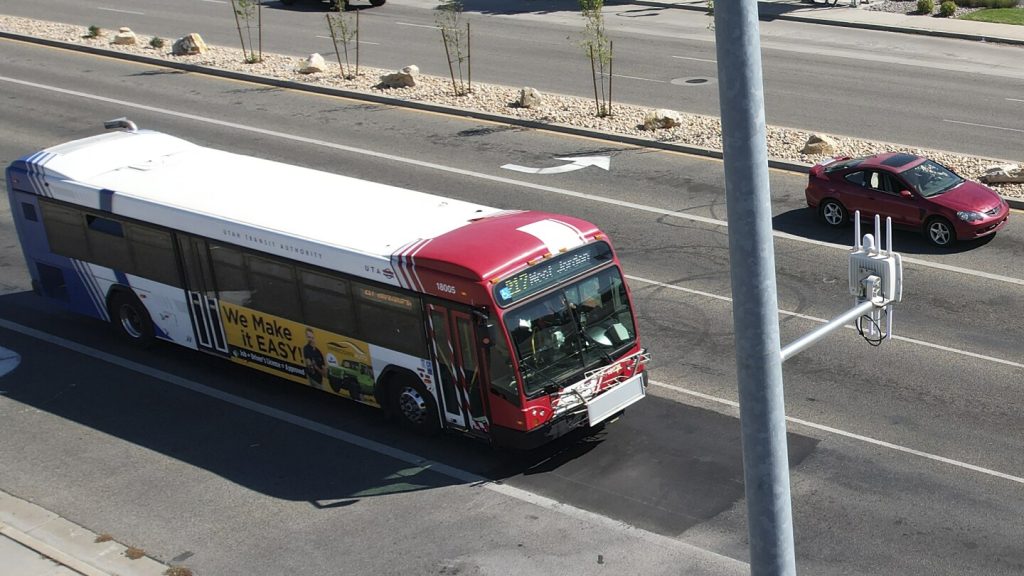Utah’s largest city has found a way to avoid red lights during rush hour by following buses equipped with radio transmitters. This system allows buses to communicate directly with traffic signals, requesting longer green lights as they approach, resulting in smoother traffic flow on smart streets. With a $20 million federal grant, officials aim to expand this technology to enable all vehicles in Utah, Colorado, and Wyoming to communicate with each other and with roadside infrastructure to receive real-time information about congestion, accidents, and road conditions.
Vehicle-to-everything technology, or V2X, allows cars to transmit information to other vehicles and sensors on the road, aiding in the prevention of accidents and improving roadway safety. The U.S. Department of Transportation has unveiled a blueprint for deploying V2X projects nationwide to reduce roadway deaths and serious injuries. This technology has the potential to prevent hundreds of thousands of crashes and save thousands of lives, making it a crucial tool in improving road safety across the country.
Privacy concerns have been a major issue for some critics of V2X technology, who fear that the system could compile identifying information about drivers, despite assurances of safeguarding personal data. The federal blueprint aims for 25% of signalized intersections in the top 75 metropolitan areas to be equipped with V2X technology by 2028, with higher targets in the following years. Ensuring the security and privacy of drivers’ information will be crucial to the successful implementation of V2X technology on a widespread scale.
Utah’s successful implementation of connected vehicle technology, starting with buses and fleet vehicles, has led to noticeable improvements in traffic flow and safety. By utilizing data from these vehicles, the state has been able to reduce congestion and improve efficiency on busy roadways. Similar projects in Michigan and Texas are also showing promising results, with smart corridors and digital infrastructure helping drivers anticipate traffic slowdowns and road hazards.
The goal of V2X technology is to create seamless communication between vehicles and roadside infrastructure to enhance road safety and reduce traffic accidents. With the potential to revolutionize transportation systems and save lives, the rapid deployment of V2X projects is essential in improving roadway conditions nationwide. As more states and cities adopt this technology, the future of transportation looks to be more efficient, safer, and technologically advanced.















